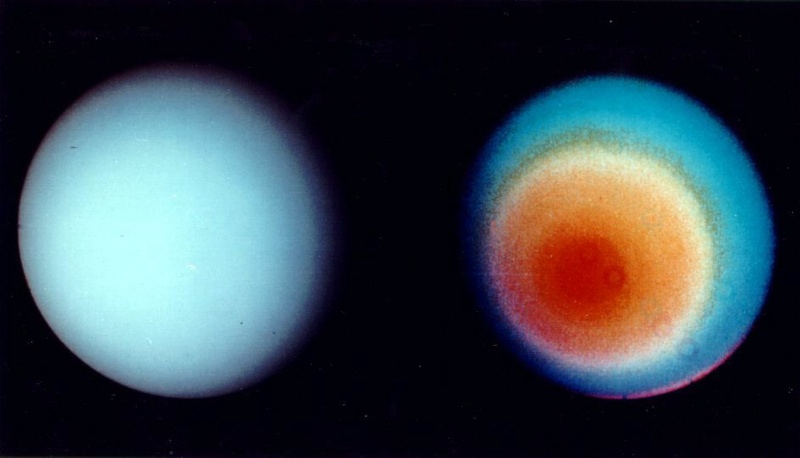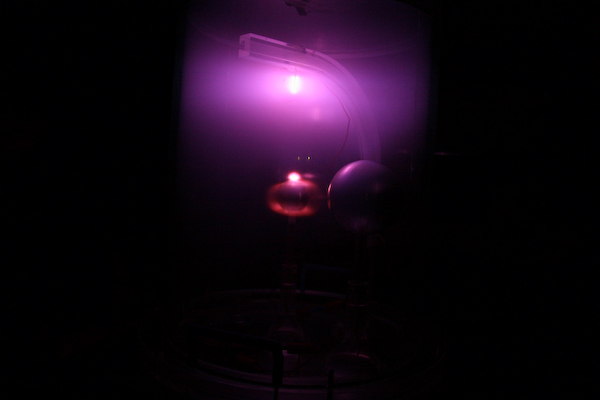Uranus
The plane in which the planets revolve around the Sun is called the ecliptic plane. The planets have also their own rotation around a geographical axis. The Earth rotates in about 24 hours on itself. Often, the rotation axis is tilted from the vertical perpendicular to the ecliptic, creating a seasonal phenomenon. This angle is called the inclination. Its value is about 23.3 degrees in the case of the Earth. Mercury is not inclined, Venus is little (-2°, the less meaning his rotate in the opposite direction with respect to the Earth), just over Jupiter (3°). Saturn and Neptune have a larger inclination : 27 °. As for Uranus it is very tilted (97 °).
It was long thought that the magnetic north - south axis should be more or less similar to the axis of rotation. This is not so, and all cases can be met : the Earth magnetic field is tilted from 11.3 degrees with respect to the geographical axis, that of Jupiter -9.6 °, but that of Saturn is well aligned with the rotation axis. When going further away, we get a huge surprise : the field of Uranus is tilted 59 degrees from the axis of rotation and that of Neptune 47 ° !
Thus, sometimes the magnetic axis of Uranus almost edge toward the Sun, such as that of Neptune (90 ° - 47 ° - 27 ° = 16 °). What kind of aurora does that produce ?
On Uranus, the Hubble Space Telescope clearly identified on the dayside the presence of an but an auroral spot : the electrons of the solar wind are directly swallowed up in the cone above the polar magnetic pole. However, the Keck telescope has photographed an oval auroral on the same side of the planet.
What is this mystery ?
What about the nightside ? The Earth is located between the Sun and Uranus : it is not possible to see the nightside of Uranus. We do not know is what the night aurora look like on this planet.
With the Planeterrella, it is easy to play simulating this configuration. It is not really science. Science would request to set a numerical model and to prove that despite the differences of scale, the Planeterrella reproduces correctly the Solar – Uranus system.
Anyway, we move the electric duct along the stem to bring it over the small sphere. It then shoot electrons directly to the North Pole. On the dayside, we see two things : the formation of an auroral spot on the magnetic pole, and an auroral oval around. Space observations are then well reproduced.
What about the nightside ? We see a bright auroral oval connected to the dayside one. Thus, if this small simulation can have a predictive quality, we believe that a space mission devoted to the aurora of Uranus and Neptune should observe nighside auroral oval !
Updated on 17 septembre 2021







